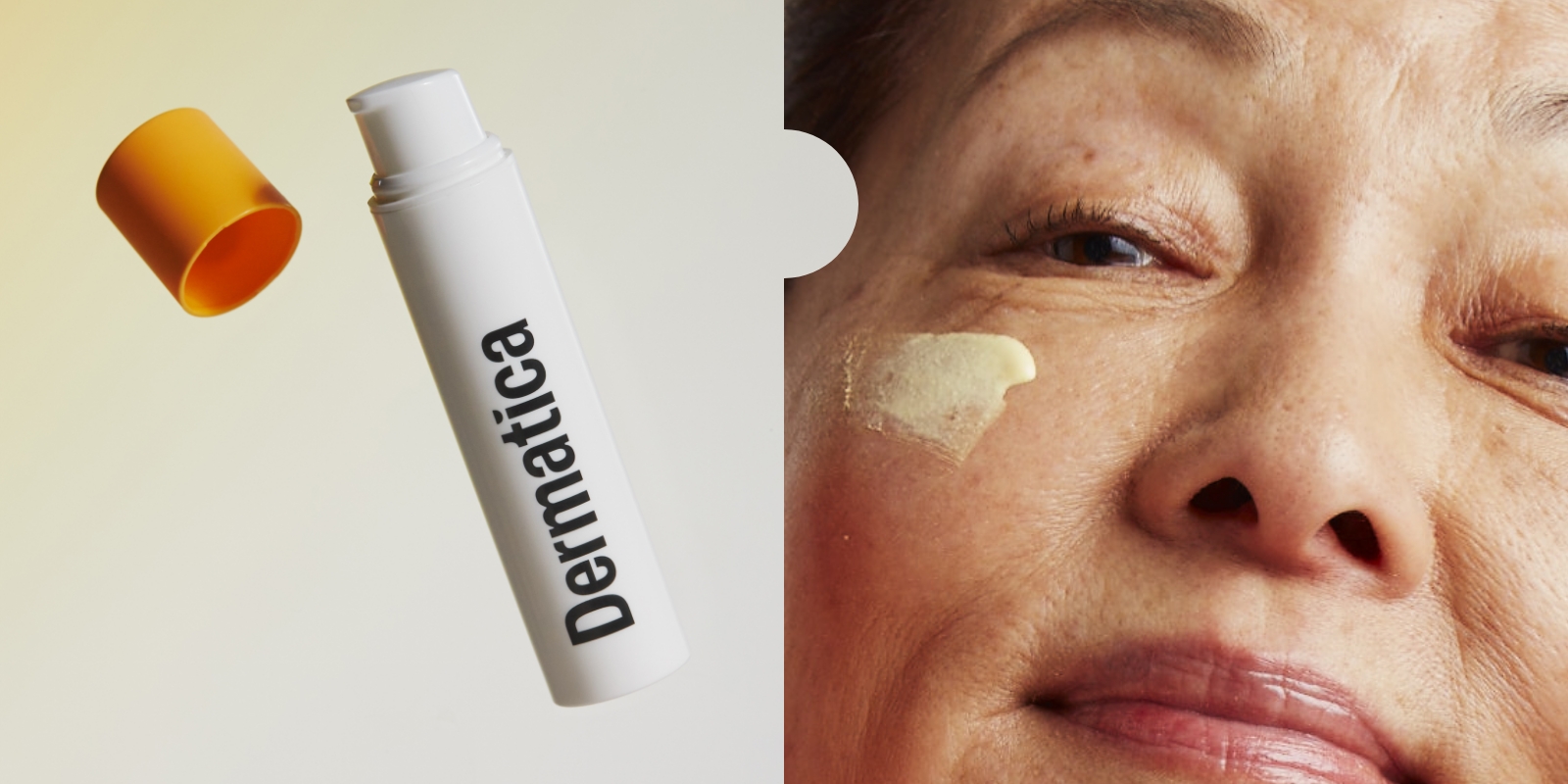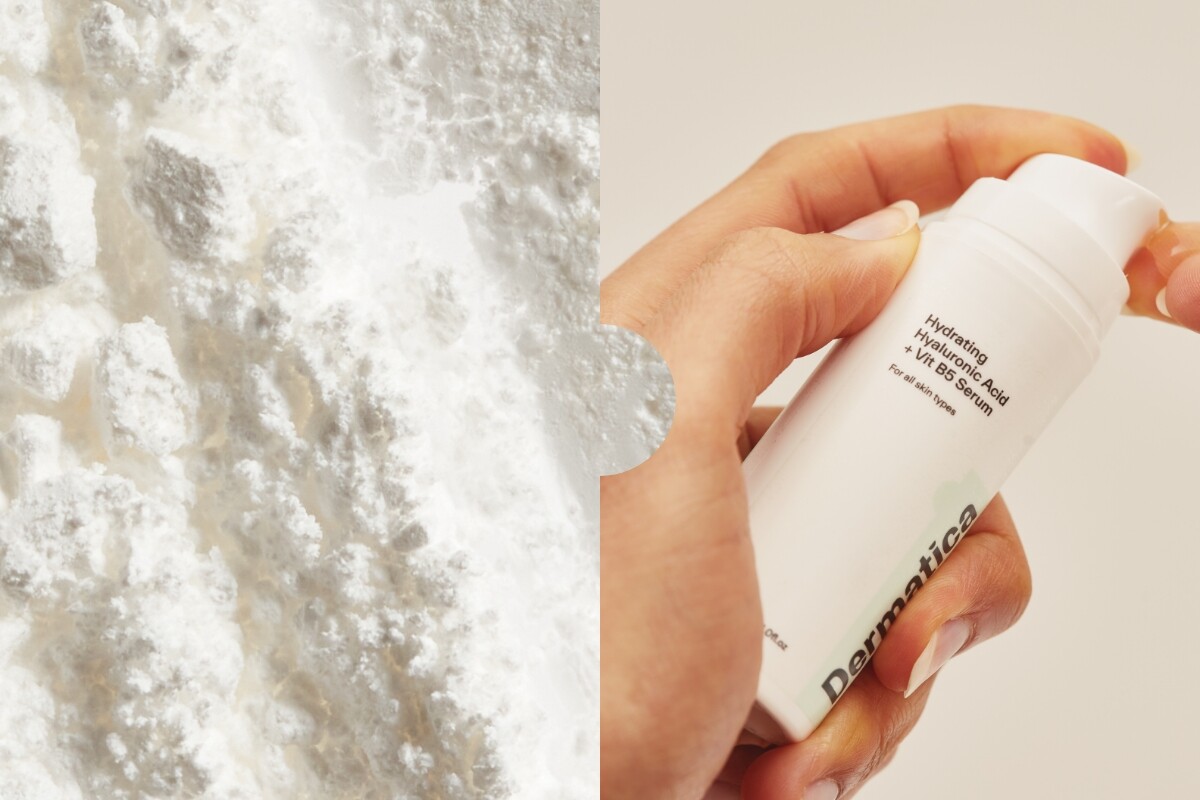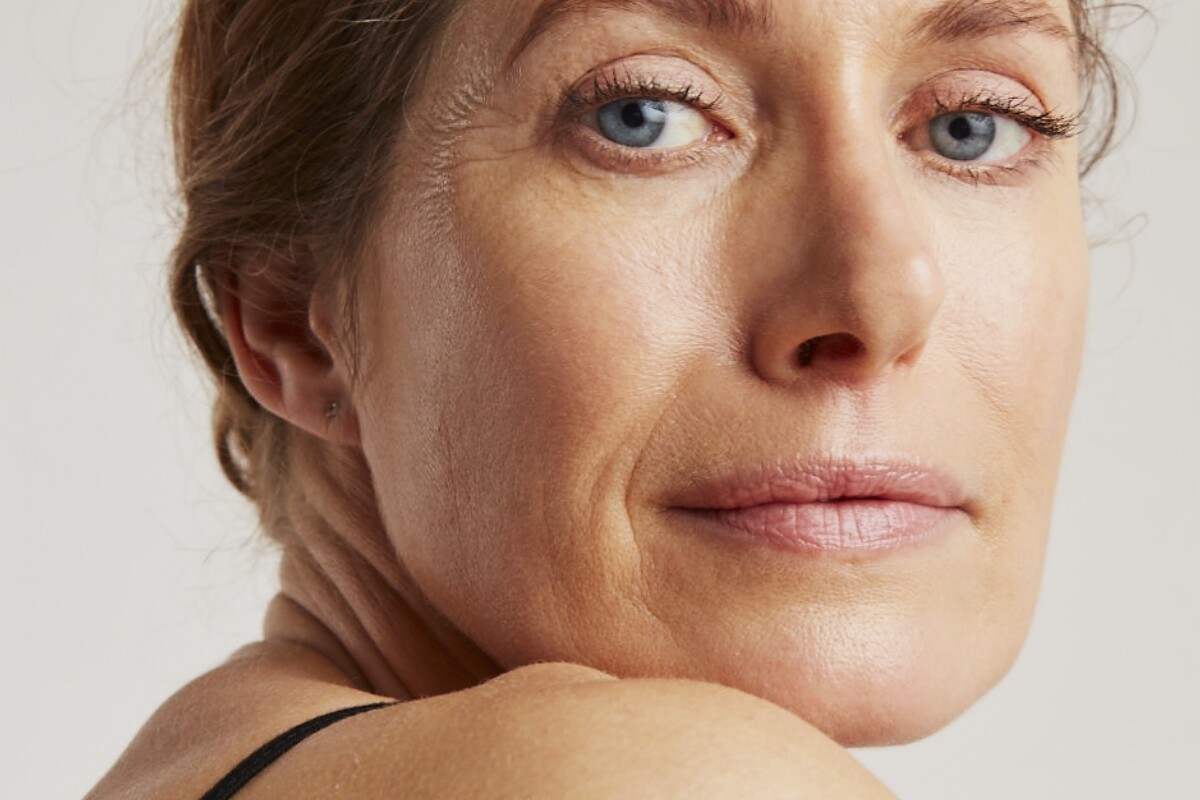Age spots on the face – they’re a common condition that falls under a wider umbrella category known as hyperpigmentation. If you have these already, you already know how stubborn fading them can be – but don’t worry, we have two bits of reassuring news.
The first is they aren’t harmful, nor are they a form of skin cancer. The second is that, if they bother you, there are ways you can fade their appearance from home. In this article, we’ll explain why you get age spots on your face, and guide you towards more resources that will help you find the right science-backed, evidence-based solutions for your skin.
What Are Age Spots?
Age spots are also often called sun spots or liver spots. The medical term is solar lentigines, and they’re all names to describe the same condition.
We’ll call them age spots in this article to avoid any confusion. You’ll usually notice them on sun-exposed areas of your skin like the face, backs of the hands, arms, chest and legs. They’re most common in people over the age of 40, but might appear at any age. (1)
Appearance
Age spots can be light tan, dark brown or black in colour depending on how pronounced they are and your individual skin type. They’re small patches of skin, measuring anywhere from a few millimetres to a few centimetres, and can appear on their own or in clusters. Age spots can appear on all skin types, whether you have fair or light skin or darker skin.
This skin condition isn’t dangerous at all, but it can affect some people’s self-esteem, confidence and quality of life. If this includes you, we’ve written an article all about science-backed treatments here.
There are a lot of different types of dark spots, so to find the right treatment it’s important you’re sure you have age spots and not another form of hyperpigmentation like melasma. If in doubt, show them to a licensed dermatology expert or your medical provider to make sure. (1)
Cause
You may be wondering what actually makes our skin form age spots. In short, it’s cumulative UV damage (also known as ultraviolet radiation) from repetitive sun exposure over our lifetime.
Read more about sun damaged skin.
How it happens is – in our body, cells called melanocytes naturally produce a pigment that gives our skin its colour. This skin pigment is called melanin. Melanin is then transported to the surface layer of skin by cells called keratinocytes. Normally, this excess melanin is then shed during our natural exfoliation process. However, excessive sun exposure can trigger our melanocytes to produce too much pigment, which then overloads our keratinocytes. The pigment then clumps together in concentrated areas, causing an age spot. (2)
Treating And Preventing Age Spots
Knowing what’s happening in your skin will help you prevent more age spots effectively, and – if you want to fade them – which treatment options will help.
Prevention
To prevent more age spots appearing on your face, make sure you follow these steps first.
Step 1: Apply a broad-spectrum sunscreen with at least SPF30 and 4 stars UVA rating, every day.
This should be the last step of your morning skincare routine. If you’re out in the sun, remember to reapply every two hours. Better still, combine it with wearing UV protective clothing. A product like our SPF50 Photodamage Defence Sunscreen will do nicely, but any sunscreen that you enjoy using is absolutely fine. (3)
Step 2: Add Vitamin C to your skincare routine.
Studies show that applying Vitamin C before your sunscreen can help fade age spots and boost your sunscreen’s SPF (Sun Protection Factor) even more. You’ll find the most effective form, ascorbic acid, in our Vitamin C 15%: Fresh Batch Ascorbic Acid. Our booster is also formulated with ferulic acid and Vitamin E, all of which can enhance UV protection and prevent free radical damage. (4)
Remember, age spots are caused by sun exposure. Without protecting your skin, not only will you run the risk of getting more age spots, but the ones you already have won’t be able to lighten or fade – no matter which treatments you use.
Discover more science-backed tips for preventing sun damage and skin ageing.
Finding A Treatment That’s Right For You
If you want to fade age spots, let’s touch on some of the science-backed treatments available – both prescription and over-the-counter. They come in two categories: Topical creams that are applied on the skin, and physical treatments that are done to the spot directly and must be performed by a dermatologist in their clinic.
Prescription topical treatments for age spots and sun damaged skin may include active ingredients like tretinoin, adapalene and brightening agents like hydroquinone. These must be prescribed to you by a licensed dermatology professional.
Non-prescription topical treatments can also help tackle the look of age spots on the face, such as retinol and azelaic acid. Active ingredients like tranexamic acid, glycolic acid and kojic acid also help brighten your overall skin tone and fade their appearance. (5)
Like we said at the start, age spots on the face or body aren’t dangerous, so whether you want to fade their appearance is completely up to you. If you find that they’re affecting your confidence, you’re doing the right thing by finding out more about it, and it might be reassuring to hear that you’re not alone.
Dermatology experts like us help people like you every day. There are also plenty of scientific studies and evidence to show that these treatments can make a noticeable improvement to your skin.
Find out what formulas are suitable for your skin by visiting our website.
References
1. Choi W, Yin L, Smuda C, Batzer J, Hearing VJ, Kolbe L. Molecular and histological characterization of age spots. Experimental Dermatology. 2017 Feb 9;26(3):242–8.
2. Thawabteh AM, Jibreen A, Karaman D, Thawabteh A, Karaman R. Skin Pigmentation Types, Causes and Treatment—A Review. Molecules [Internet]. 2023 Jun 18;28(12):4839. Available from: https://www.mdpi.com/1420-3049/28/12/4839
3. Shanbhag S, Nayak A, Narayan R, Nayak U. Anti-aging and Sunscreens: Paradigm Shift in Cosmetics. Adv Pharm Bull [Internet]. 2019;2019(3):348–59. Available from: https://apb.tbzmed.ac.ir/Files/Inpress/apb-24144.pdf
4. Lin FH, Lin JY, Gupta RD, Tournas JA, Burch JA, Angelica Selim M, et al. Ferulic Acid Stabilizes a Solution of Vitamins C and E and Doubles its Photoprotection of Skin. Journal of Investigative Dermatology. 2005 Oct;125(4):826–32.
5. Moolla S, Miller-Monthrope Y. Dermatology: how to manage facial hyperpigmentation in skin of colour. Drugs in Context [Internet]. 2022 May 31;11:2021–20112. Available from: https://www.ncbi.nlm.nih.gov/pmc/articles/PMC9165630/





